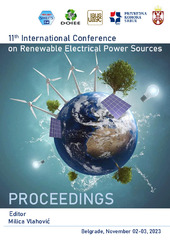| dc.contributor | Vlahović, Milica | |
| dc.creator | Lopičić, Zorica | |
| dc.creator | Antanasković, Anja | |
| dc.creator | Cvetković, Slobodan | |
| dc.creator | Adamović, Vladimir | |
| dc.creator | Šoštarić, Tatjana | |
| dc.creator | Avdalović, Jelena | |
| dc.creator | Kijevčanin, Mirjana | |
| dc.date.accessioned | 2024-03-21T13:00:52Z | |
| dc.date.available | 2024-03-21T13:00:52Z | |
| dc.date.issued | 2023 | |
| dc.identifier.isbn | 978-86-85535-16-1 | |
| dc.identifier.uri | https://ritnms.itnms.ac.rs/handle/123456789/1236 | |
| dc.description.abstract | The decrease of fossil fuel resources as well as associated pollution induced by its applications has
increased the interest in findings of renewable fuels from various biomasses such as wood, energy
crops, and various waste disposed from agricultural and food-industry activities. Especially
interesting is lignocellulosic waste (LCW) biomass, found in large quantities after processing of the
raw biomass, which pose certain energetic properties that might be used to fulfil future
sustainability demands. This paper describes the thermal decomposition of waste peach stones (PS)
investigated via thermogravimetric (TG) analyses. TG/DTG analyses provided a set of experimental
mass loss data (obtained under different conditions), which were modelled by different kinetic
models, resulting in parameters that might be used for industrial application of the tested biofuel.
The goal of analyzing the kinetics of thermal degradation was to establish a relationship between
the rate of degradation, degree of conversion (α) and temperature. In this sense, the investigation of
the kinetics of thermal degradation was performed in non-isothermal conditions, with the heating
speed varying from 5 to 20 ºC/min in an oxygen stream. Activation energy (Ea) of the PS thermal
degradation was determined using Flynn-Wall-Ozawa (FWO) isoconversional model free method.
The possible reaction mechanism that controls the process was investigated by the method of Coats-
Redfern (C-R). The values of the Ea obtained by this method were not constant with the change in
the degree of conversion (α), indicating that the thermal decomposition of PS represents a complex
process that cannot be described by a one-step reaction in the entire range of conversions. PS
waste samples investigated in this paper, have certain physical and chemical properties which
satisfy request for energy density, small ash content and safe burn out. Presented results might
support the value of biowaste in a future circular bio economy of Serbia. | sr |
| dc.language.iso | en | sr |
| dc.publisher | Belgrade : Union of Mechanical and Electrotechnical Engineers and Technicians of Serbia (SMEITS) Society for Renewable Electrical Power Sources | sr |
| dc.relation | info:eu-repo/grantAgreement/MESTD/inst-2020/200023/RS// | sr |
| dc.rights | openAccess | sr |
| dc.source | 11th International Conference on Renewable Electrical Power Sources | sr |
| dc.subject | lignocellulosic waste biomass | sr |
| dc.subject | peach stone | sr |
| dc.subject | thermal decomposition | sr |
| dc.subject | isoconversional methods | sr |
| dc.subject | C-R model | sr |
| dc.title | Thermal degradation kinetics of lignocellulosic peach stone waste | sr |
| dc.type | conferenceObject | sr |
| dc.rights.license | ARR | sr |
| dc.citation.epage | 132 | |
| dc.citation.spage | 125 | |
| dc.identifier.fulltext | http://ritnms.itnms.ac.rs/bitstream/id/2886/bitstream_2886.pdf | |
| dc.type.version | publishedVersion | sr |

